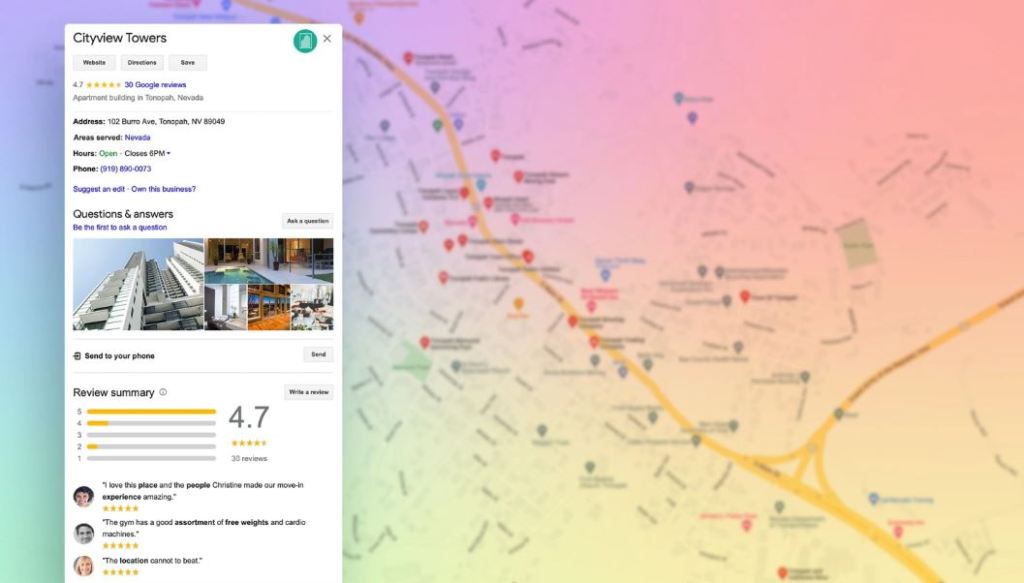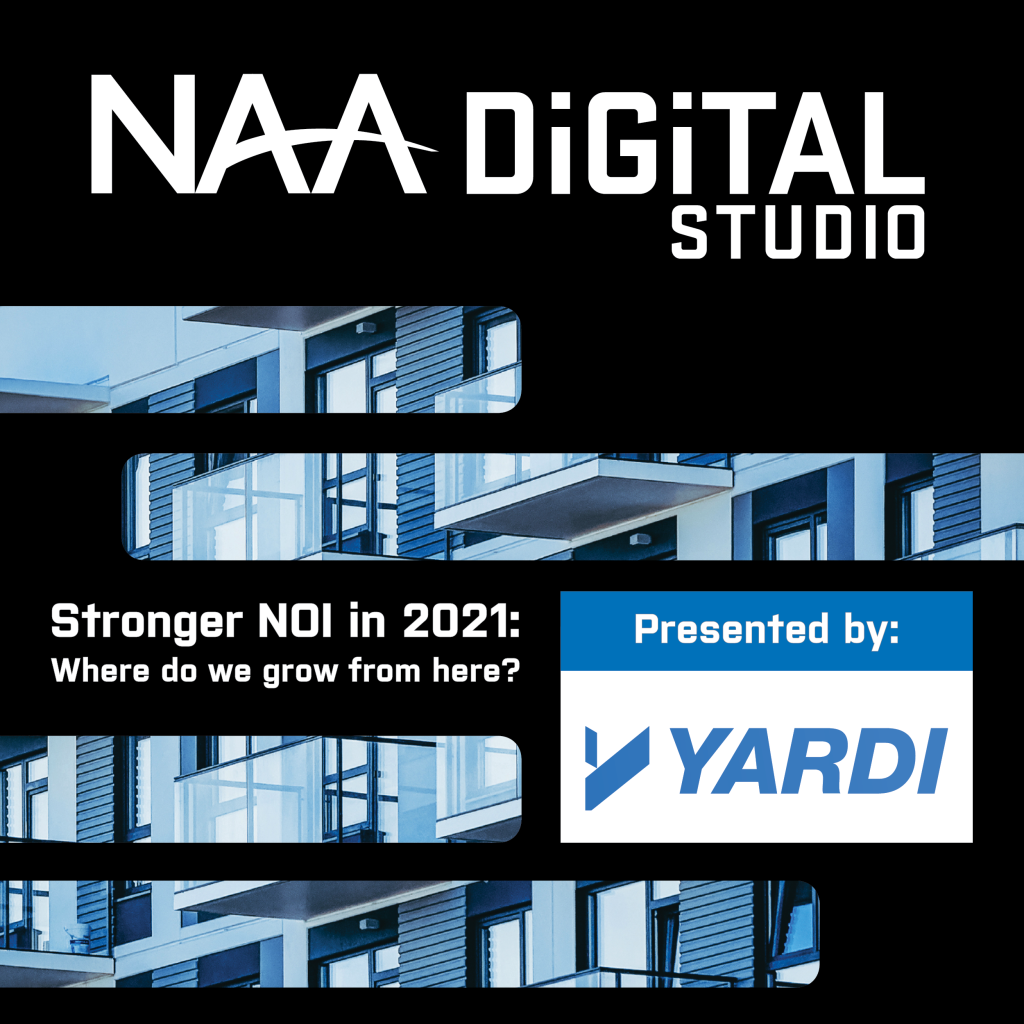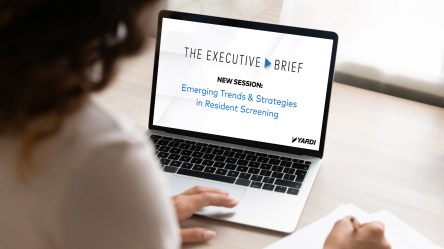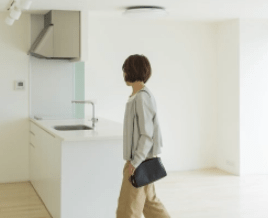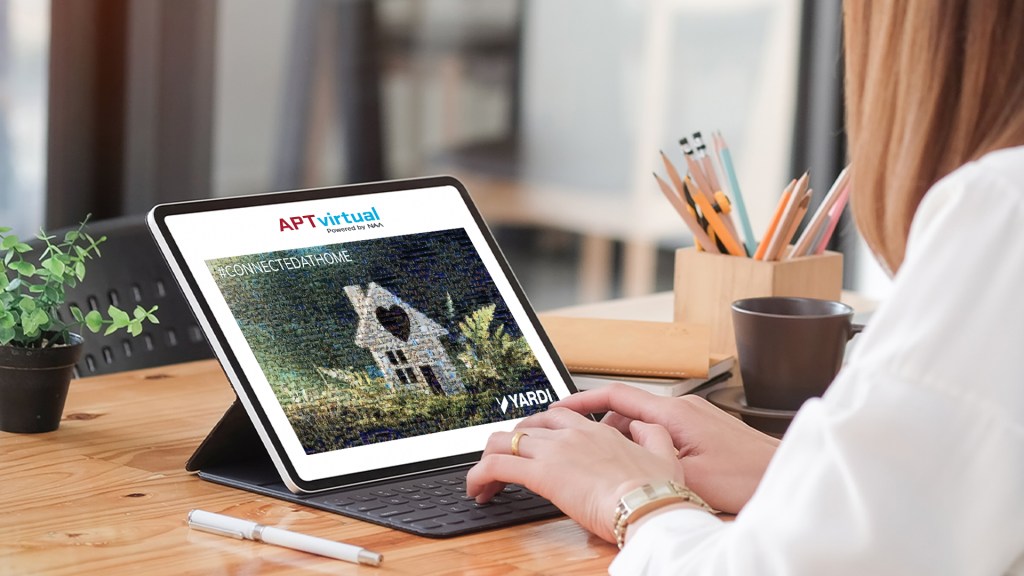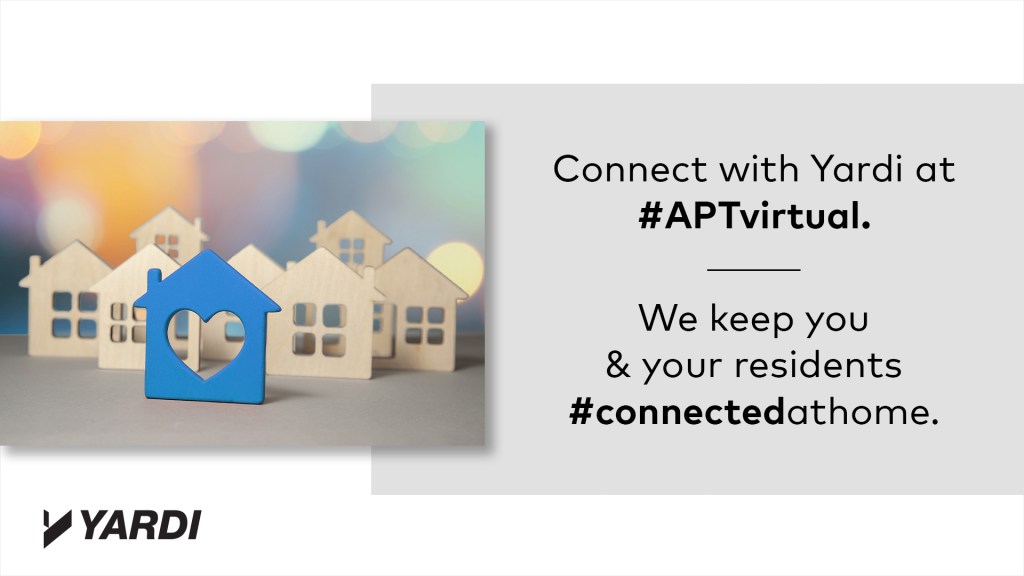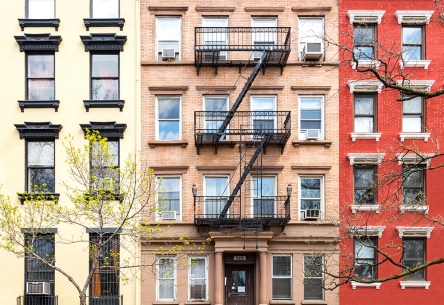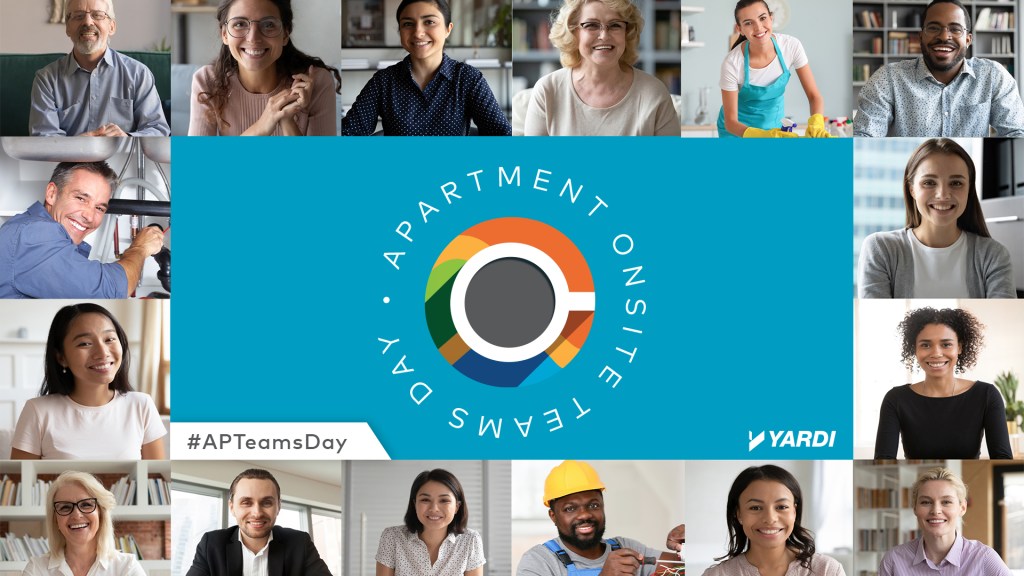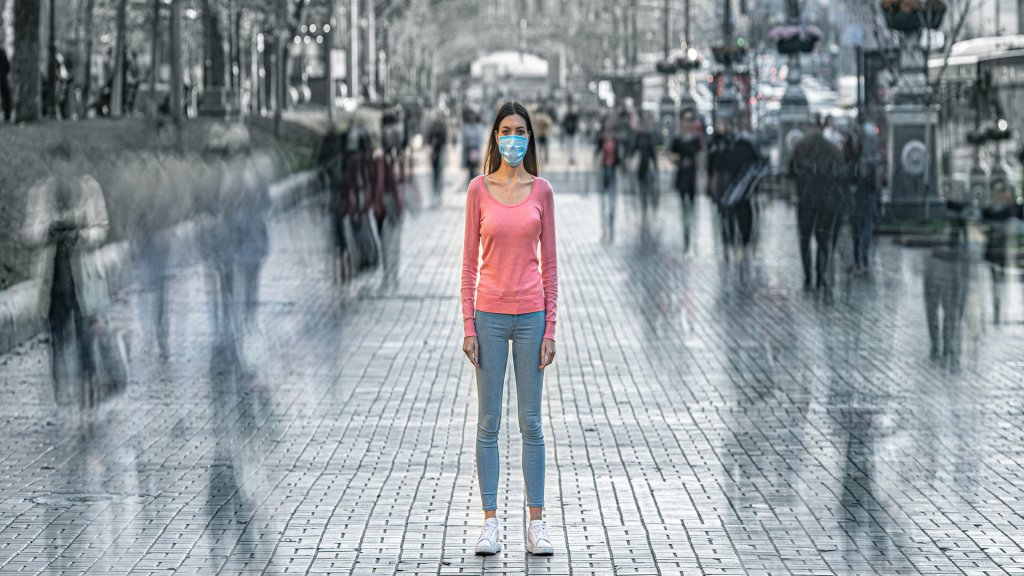Let technology do its work and have happy residents, less pet damage, plenty of renewals and profitability. Earlier this month, Apartmentalize highlighted the latest technology property owners and companies are embracing for their pet residents. Let’s explore these opportunities for innovation. Paws and Effect. Many property management companies are using the latest technology for their furry residents and seeing immense success. Starting with pet DNA testing, management can use these tests and know which poop is coming from which dog. With this knowledge, management can decide whether to issue warnings to pet owners or give them an extra monthly fee. This eliminates all un scooped pet waste around the property, ultimately leading to happier residents. Pet screening has also been implemented in some properties, giving prospective residents a quick survey that will track vaccination records and behavioral affidavits. Those who score a lower score must pay a high pet rent. Those with a high score can have zero to minimal pet rent. This allows property managers and owners to set high standards, eliminating the need for breed restrictions and allowing for more pet inclusivity. Those who offer no pet rent with high screening scores will be happy and likely renew their lease contracts. Plus, word-of-mouth marketing from grateful tenants will be significant. Another way to waive fees or pet rent is if those looking to be pet owners adopt a rescue dog or cat. Host a pet adoption day at the property. Those who adopt that day can get a discount or waived fees and rent. This not only helps the community for those pets in need but also shows that management cares and wants to see residents happy while living at the property, which will lead to retention and profitability. Oppawtunities to innovate....
Optimize Your Profile
Google Business Tips for Apartments
You’ve probably heard the saying, “You never get a second chance to make a good first impression.” Think of your Google Business Profile (GBP) as your business’ digital first impression; it’s critical to put your best foot forward to attract the most traffic to your apartment community. In fact, did you know that 50% of GBP interactions lead to a website visit? Your GBP is a description of your business that appears above or to the side of the organic results in Google search, and it includes key information about your business such as your name, number, hours of operation and more. The goal of your GBP is to display an overview of the business Google thinks a user is searching for, and it actually plays a key role in your SEO strategy. Let’s dig into why your GBP is so important and how to make yours the best it can be. Why is your Google Business Profile important? Google is the leading search engine in the U.S., commanding a 92% market share. With this in mind, it’s important to be visible where the bulk of users are searching. Your GBP helps you stand out from the crowd and boosts property visibility. An accurate and up-to-date profile allows you to appear above organic search results, showcasing your business and all it offers in a clear and affective way. Your GBP is a great opportunity to take up critical real estate on the SERPs. A complete GBP also greatly increases your odds of appearing in the Google Local Map Pack. This set of featured results lists businesses in the searcher’s local area. If you’re included, it will definitely drive traffic to your website. Building an optimized Google Business Profile for apartments Since 64% of users find business contact information on GBP, it’s more important than ever to have a fully completed and error-free profile. It is one of the best ways to market your business online, and best of all, setting up your GBP is free! To get started, claim your business if Google has already set one up. To do this, search for your business on Google and click “Claim this business” if a GBP populates on the Search Engine Results Page. If it doesn’t exist yet you also have the opportunity to create a new one. Next, you should select the business category that applies to your business. For example, you can select “Apartment complex.” After this, you should add your business information. This includes name, address, phone number and URL. To top it off, don’t forget to add in your hours of operation and a brief description of your business. Finally, make sure to verify your business location by phone, text, email or via postcard sent to your physical address. GBP best practices Setting up your GBP is a good start, but you can’t just set it and forget it. Here are some best practices to follow to make sure you’re making the most of what a Google Business Profile for apartments can offer: Consistently check and update It’s important to check your GBP as often as possible. When talking about GBPs, Gretchen Walker, manager at REACH by RentCafe,comments, “It’s important to keep it up to date. Google allows users to come in and suggest changes to those profiles, and … just because it’s correct today doesn’t mean it’s going to be correct tomorrow.” If your name, address, phone number and URL are not consistent with other listings that feature your website, it can hurt your optimization. Respond to your reviews Managing your online reputation is an important part of your digital marketing strategy. Responding to reviews on your GBP is a great way to engage with clients while boosting your SEO. For more information on how to best respond to reviews, check out this article. Boost engagement by adding photos and videos Business profiles that add...
Secret Life of Pets
Amenities for four-legged friends
Pet-friendly apartments are becoming the norm, especially among younger renters. Millennials are now the biggest market for pet ownership. Property managers and owners need to stand out and make their complexes more unique and attractive with pet amenities. But have you ever wondered what your pet might want in their new apartment? The secret life of pets may open new ideas for property owners across the country. Let’s look at this from the pet’s perspective and what they want to see when they tag along on a tour of your apartment complex. The perfect perks for pups Dogs are excitable, sociable, friendly, and have lots of energy. Since dogs are so social and energetic, an on-site dog park is essential to earn five stars from Fido. Something that would be large enough for them to spread their paws and has lots of green grass. Yappy Hour at the complex dog park would be an attractive resident event that you can hold monthly. During Yappy Hour you can provide some refreshments and picture ops to boost your property’s social media accounts – some of your resident dogs may even be Insta influencers! However, some dogs are not too keen on shared space. Grassy areas with walking trails around the complex are another huge plus for all pups and their parents. Whether you have walking trails or not, strategically placed poop bag stations are a must for any pet-friendly property. Post-pandemic, return to the office is starting to make a comeback. A dog door leading out to the balcony or patio is another awesome option for pets and owners alike. That way Barkley can lounge on the balcony and not have to be stuck inside all day while their human is working eight hours or more....
2022 Design Trends
For Property Websites
Figuring out how to best design your website can be a daunting task. This summer, REACH by RentCafe surveyed more than 12,000 people on RentCafe.com to learn more about their website design preferences.Read on to see the survey results and learn more about the most popular website design trends of 2022. Survey says… Which color schemes do you prefer? Calm and soothing: 73.5%Dark and moody: 15.2%Vibrant and bold: 11.3% Which two design concepts do you prefer? Soft, curved edges and shapes: 33.6%Plant or earth-inspired prints: 21.4%Subtle textures: 20.1%Sharp geometric shapes: 15.8%Colorful floral patterns: 9.2% How would you decorate your apartment? Clean and minimal. I like things calm, simple and purposeful: 59%Dark backgrounds and a roaring fireplace. I love a cozy library vibe: 16%Romantic countryside. I want to feel like I’m in a whimsical cottage: 15.7%Lots of patterns and colors. I like to bring laughter to life, the more the merrier: 9.3% I’d be most excited to live in an apartment that: Embraces a soft, relaxing atmosphere with calm colors: 47%Is sleek and modern: 29.5%Emphasizes sustainability in the design: 12%Has chic outdoor spaces: 11.5% When viewing a design, how do you want to feel? Calm: 68.6%Excited: 14.2%Intrigued: 13.5%Amused: 3.6% Japandi and minimalism Kicking off the top design trends of 2022 is Japandi. Neha Marathe, design manager at REACH, defines Japandi as a hybrid that’s “a brilliant fusion of Japanese and Scandinavian styles which are anchored in minimalism, clean lines and neutral colors.” Japandi design celebrates a blend of simplicity, functionality and intentionality, and it’s on the rise. In fact, between 2020 and 2021, Google searches for Japandi increased by 1,217%. An important element of Japandi is minimalism, which celebrates clean lines and uncluttered surfaces while avoiding excessive ornamentation. More and more, people are gravitating towards...
Build the Right Rep
Tips for Property Managers
Reputation: It’s created from what people think and, more importantly, say about your communities. “Negative or false comments about your building can affect how others view your site, sometimes even before seeing it in person,” says Kings III, a Texas-based provider of emergency communication service solutions for property managers. That perception can translate to lost traffic, prospects and, ultimately, money. “Put yourself in your tenant’s shoes. What will you do when looking for a property? You’ll aim straight for online reviews and social media pages to see what you’re getting into. You’ll be turned off if you find one-star reviews and inactive/barely active social media accounts. The same applies to your prospective tenants,” notes the Los Angeles Property Management Group (LAPMG), which serves commercial and residential property owners. Industry research bears out these sentiments. For example, 69% of respondents to the 2022 Renter Preference Survey Report said they referenced property ratings and reviews in their most recent rental-home search, while 79% said ratings and reviewed stopped them from visiting specific properties. Recent reviews and an active, updated Google Business Profile can help place communities in the Google Local 3-Pack and rank them higher than competitors in search engine results. In fact, according to search marketing research groups Redshift and Moz, 15% of the ranking factors that determine whether you get into the “Local 3-Pack” — the listing of three businesses you see first in the results of searches using keywords — come from the quantity, quality, recentness and response to reviews. About 25% of the weight of your Local 3-Pack ranking signal comes from your Google Business Profile, so it’s important to optimize and maintain it. Here are a few tips from LAPMG and other experts on the best ways to, as Kings III...
Loyalty + Retention
Supporting Resident Mental Health
If you could help make the holidays less difficult for your residents, would you do it? Grief, stress, loneliness, social anxiety and financial struggles can be particularly heightened during this time of year. Through supportive services and resources, you can aid residents during the holidays with tools that you already have on hand. Resident loyalty is solidified through the human-to-human connection Research confirms that developing a sense of community adds value to housing. Residents who feel integrated into their communities are more likely to renew their leases, which saves you time and bolsters your bottom line. The suggestions below can help residents feel welcomed and supported during difficult times. They show that you care because you do care! As a bonus, your efforts will not go unnoticed when it’s time to renew the lease. Resident retention improves your net operating income while giving you warm, fuzzy feelings for the holidays! Read how you can promote resident retention through culture and branding. Encourage residents to move with you to address the symptoms of stress, depression and loneliness Consider hosting group fitness classes and wellness events at your property. Physical movement releases feel-good hormones called endorphins. Endorphins interact with the brain receptors that decrease the reception of discomfort. They also reduce the stress hormone cortisol. Certain types of movement can also soothe the nervous system. For indoor options, restorative yoga, yin yoga, tai chi and qigong are methods of movement that activate the parasympathetic nervous system. This system of the body promotes physical and mental recovery, healthy digestion and helps the body to relax. (As the nation continues to navigate the pandemic, some residents may not be comfortable in indoor group activities. Consider setting up a camera on the instructor so that they can lead both...
NAA Digital Studio
Achieve Stronger NOI in 2021
Do you want to emerge from 2021 with a more efficient, agile and profitable organization? Discover insights to help you reach your goals during the National Apartment Association (NAA) Digital Studio Series! Stronger NOI in 2021 The April NAA Digital Studio, presented by Yardi, is a half-day event including deep dive and interactive sessions, industry panels, networking and more. This month’s theme is “Stronger NOI in 2021: Where do we grow from here?” Experts from leading multifamily companies across the country will discuss the many ways in which COVID-19 has impacted the real estate industry and, more specifically, apartment management. Each session features unique programming that tackles common industry challenges. Through the sessions, you can: Explore market changes and projected financial impacts to help you plan smarter in 2021 and beyond. Gain insights from multifamily leaders who will share new performance metrics they’re using to change the way they do business. Discover ways to improve net operating income beyond rent increases. Featured speakers include guests from Luma Residential, Bell Partners, BH Management Services, Cirrus and more. Industry professionals focused on operations, marketing, technology and related roles will walk away with practical, actionable items to strengthen your organization. Work + play The event kicks off with keynote speaker Jeff Adler, vice president of Yardi Matrix, offering an engaging look at the latest multifamily data. Examine changes in rent growth, occupancy, retention and renter preferences over the last 12 months. Learn how new demographic patterns have affected top and bottom markets. Attendees will also see rent and occupancy forecasts for a variety of property groups. Then, stick around for additional sessions that connect the market update to real-life experiences and plans to protect NOI going forward. End the day with a relaxing musical interlude. Leslie and...
Let’s chat
Picking the right chatbot
Property management chatbots have been a hot topic lately, especially for multifamily rentals. A chatbot can meet renters’ increasing demands for digital communication and capture more leasing opportunities, but only if it’s used wisely. First, we’ll talk about why you should consider “hiring” a chatbot if you don’t have one on staff already. Then, we’ll show you three things your apartment rental chatbot should be able to do. Finally, watch a short video to get chatbot tips from expert marketer Drew Davis, who spent months talking to chatbots in different industries to see what works and what doesn’t. Why a chatbot? Employing a chatbot as part of your customer experience team can ensure you never miss an incoming leasing opportunity, day or night, and it frees up onsite staff to focus on assisting applicants and residents. If you don’t have a chatbot yet, you’re probably losing leases to competitors that do. That’s because customers expect instant and accurate answers to their questions. They hate waiting. In fact, in a survey on response times that included more than 3,000 customers, 88% of respondents expected a response within an hour, with 33% of them saying they expect an answer in 15 minutes or less. Is that realistic for your agents, especially when you factor in after-hours contacts? Probably not. That’s where a chatbot comes in handy. But do people really want to talk to a bot? Recent data says they do. The 2020 NMHC/Kingsley Apartment Resident Preferences Report found that 48% of renters say they would use a chatbot in their next rental search. That number is anticipated to grow as chatbot adoption becomes increasingly common across multiple industries. A 2019 report by Chatbots Life predicts that chatbots will handle 85% of human interactions online within...
Screening Strategies
Trends to Know Now
Along with changing the way we do almost everything, 2020 caused multifamily operators to re-think their marketing and leasing strategies — including applicant screening. While most businesses have pivoted to online services and are seeing benefits including reduced operational costs, online resident screening requires some attention to ensure quality renters are selected and risk is minimized. The latest webcast of The Executive Brief series, Emerging Trends & Strategies in Resident Screening, tackles this very issue. In this session Patrick Hennessey, Yardi’s vice president overseeing ScreeningWorks Pro, talks to Sarah Ogelsby-Battle, president of residential at Beztak and Jennifer Hayward, vice president of transition management at Pennrose, about how they’ve adjusted their resident screening strategies during the pandemic and for the future. From national trends in apartment application data to fraud prevention, these industry pros share insights to help guide multifamily screening practices in 2021 and beyond. National Rental Application Trends While screening volumes were at a historic low from mid-March to mid-May in 2020, after reaching normal volumes by the end of May, the industry saw a spike with higher-than-ever volumes in July, August and September. According to Hennessey, “Not only did most of the people who weren’t in the rental market in March and April re-enter, but we also saw additional people entering the market.” Hennessey pointed out a few other interesting trends in rental applications including how and when they’re being submitted. “One of the interesting things we observed as things went virtual and people were doing self-guided tours and applying online, is we’ve been seeing fewer and fewer screenings on weekends and into Mondays, and a spike in screening and leasing activity on Tuesdays, Wednesdays and Thursdays.” He added that some clients have restructured their on-site team schedules as a result. With...
Asset Performance
Better outcomes with better data
Industry leaders from Grubb Properties and MG Properties Group recently shared insights on big data, benchmarking and forecasting with Yardi’s Paul Yount. “You won’t be successful in any market if you don’t have the right tools. You need the data. You have to be ready and prepared,” said Joe Anfuso, chief financial officer at MG Properties Group. Nothing could have been truer for real estate companies in 2020. With unanticipated challenges brought by the COVID-19 pandemic, real estate operators had to act fast to protect their bottom lines and keep staff and residents safe. For most companies, that meant adopting technology to transform their businesses. Read on to learn how Grubb Properties and MG Properties Group have been using Asset IQ, Yardi’s multifamily asset management software part of the Yardi Elevate suite of multifamily solutions, to guide decisions and improve performance with better data. Pivoting to online services With the growing demand for contactless leasing and transactions, many operators have made the pivot to doing business online. And it’s likely that contactless leasing — including self-guided tours — will be around long after the pandemic. Additionally, asset intelligence driven by big data has been guiding real estate operators through challenging times and will continue to lead the way. “2020 budget numbers were very different from what we projected in 2019. We didn’t see the normal seasonal changes, and budgets were pretty much out the window which has made competitor and peer data very important to accurately measure performance. We need to know how we’re measuring up to our competitors, what concessions and lease terms we’re offering and if we’re keeping the back door closed to avoid being in a vulnerable position,” said Shawn Cardner, executive vice president of Grubb Properties. According to Joe Anfuso,...
Pivotal Shifts
Emerging Multifamily Trends
There’s no way to introduce an article about the changes wrought by 2020 that doesn’t underplay the significance of the COVID-19 pandemic. It’s affected the way we do everything — limiting travel, increasing screen time and turning even the most basic activity into an exercise in risk management. For people in the multifamily industry, apartment rentals went from a typically high-touch experience to virtually contactless, seemingly overnight. And while some of the changes are only temporary, others are likely to last long after the virus abates. “This year is a pivotal moment that will reshape how we do business,” asserts Esther Bonardi, vice president of marketing here at Yardi. “The pandemic is changing our future. How can we use this for good?” Bonardi recently had the chance to talk with three multifamily leaders about their experiences marketing and leasing apartments during the pandemic. Hear from Garin Hamburger, senior director of national marketing at Pinnacle; Ian Mattingly, president of LumaCorp Inc.; and Pei Pei Mirabella, senior vice president of operations at Bozzuto on the emerging trends that will have the biggest impact on multifamily rentals going forward. Bonardi: What do you think was the biggest change in 2020 that has the most potential to become a permanent shift in the way we do business? Hamburger: The biggest change that will last through the pandemic and continue to evolve after it are the creation of alternative tour types, specifically virtual and self-guided tours. I really believe we’re coming into an age where technology will dramatically shift the customer journey and the leasing agent experience. Mirabella: The companies faring better during abrupt shutdowns have the tools and technology in place to pivot operations and enhance productivity while working remotely. In addition to using live and pre-recorded virtual...
What Renters Want
Self-Guided Tour Success Tips
Do you know what your prospects want in an apartment tour? Esther Bonardi, vice president of marketing at Yardi, hosted “OPTECH Express: The New Apartment Tour — Insights for Today’s Customer Preferences” as part of NMHC OPTECH 2020. The mini session gave insights into the latest renter preferences. Bonardi also offered actionable tasks to carry property managers into the future of touring. RentCafe.com surveys reveal what renters want To better understand renter preferences, Yardi issued two surveys. The May survey published by RentCafe.com revealed that 83% of renters would take a self-guided tour if it was offered to them. When asked why they would take a self-guided tour, the results were surprising. “About 63% of respondents said they wanted to tour at their own time and their own pace. That had nothing to do with social distancing,” observes Bonardi. “So we might say from that, it’s likely that people want this for other reasons, and it will continue to be important long beyond the pandemic.” Yardi focused on Gen Z and Millennial renters during the fall survey. Results reveal that 52% of respondents preferred a non-agent-led tour, included self-guided and virtual. Nearly 43% said they would still love to work with an agent. “These are important numbers to keep in mind,” says Bonardi. “Those numbers tell us that we have to offer options. One tour type is no longer enough to meet the changing demands of our customers. We need to let them decide what options they want to tour the apartment home.” Tips for offering new tour types “Don’t offer a new tour type just to check a box,” advises Bonardi. “Gather with your team and figure out how to make each tour feel as personal and connected as possible. After all, this...
Tips for Hosting + Staging
Virtual + Self-Guided Tours
If you thought that virtual tours and self-guided tours were flashes in the pan, think again. Renters throughout the U.S. are speaking up about their tour preferences. Non-agent-lead tours are ideal for more than 52% of renters, reports a survey by RentCafe.com. That same report reveals that more than 83% of renters would take a self-guided tour. Though social distancing is a factor for some, 63% of renters would do so because they want to tour at their own time and pace. Additionally, more than 70% of renters would rent an apartment without seeing it in person if they could explore it via virtual tour. Virtual and self-guided tours offer convenience as well as safety. Since convenience is always trending, these tour types are here to stay! Check out the pro tips below to host effective virtual and self-guided tours. Special camera considerations for virtual tours Property photographer Deanna Campana of Welcome Home encourages agents to conduct tours in landscape mode (horizonal) rather than portrait (vertical). “The latter will make all your spaces seem narrow and cramped,” she explains. Campana notes that time of day is also important. During a conventional tour, you may choose to tour midday, open all the blinds and let the natural light cascade into the room. When walking from space to space during a virtual tour, however, this will cause your camera to fade between very dim and bleached-out spaces. The results are a tour that’s challenging to see, much less enjoy. “Midday light is too harsh,” warns Campana. “Consider scheduling most video tours in the early morning or evening light. Cloudy days are ideal so you can shoot at any time.” She adds, “If you must tour midday, close the blinds. The outdoors will be overexposed, too bright for renters to see what’s out there, anyway. It’s better to focus on what’s inside.” She advises treating the view from each room as its own feature when necessary. Go outside when you can. If not, approach the window, open the blinds, and close them once done. When light distortion is unavoidable, schedule in the evenings during “golden hour” when the light is “soft, magical and with a golden glow.” “Many phones will allow you to snap pictures while recording,” says Campana. “Take pictures of things the renter likes. You can include them in your follow-up email.” Live vs. pre-recorded tours Pre-recorded tours are a great option. About 27% of renters said they would prefer to see prerecorded videos of units over live virtual tours, reports Adobo listing site. Once posted, pre-recorded unit tours are available 24/7 on your website, which saves time for staff. A videographer or component agent can pick the ideal time of day for the best lighting and noise control. Image stabilization tools create a beautiful, smooth tour and less hassle for staff. For agents taking on the challenge, Campana adds, “For pre-recorded tours, shoot the video at night using ambient light. It’s uniform, flattering and won’t cause troublesome light imbalances.” Since pre-recorded tours require editing, they may not be ideal for hot markets where units are listed and leased in a matter of hours. Other considerations for pre-recorded and live virtual tours Pace matters. Walking too quickly through a unit will cause renters to feel rushed and possibly dizzy and disoriented. “Walk slower than you think you need to, like you’re walking with a senior,” smiles Genitra Maxwell, assistant manager at Bridges of Kennesaw apartment community. “And just check in and ask if the pace is okay.” Leasing agents may be accustomed to narrating conventional tours. Too much talking may seem distracting to some. “Just ask them what they prefer,” advises Maxwell. “Some may want a narrated walkthrough and then silence during the second pass where they can ask questions.” Maxwell encourages agents to home in on details that renters won’t see a camera phone. “Any technology in the unit,...
Amenity Reset
For Multifamily
Amenities can be the irresistible lure that persuades apartment searchers to choose one community over another. Rooftop pools, fitness suites, concierge package service, housekeeping, business centers and dog wash stations all have devotees. “Over the past several years the multifamily asset class has been engaged in an amenities war, with projects offering better and more luxurious add-ons in order to draw in residents,” GlobeSt.com reported in April 2020. But COVID-19 prompted some apartment residents to rethink what matters to them, which in turn forced owners and managers to reevaluate their offerings. “Everybody is really searching for creative solutions right now,” Jeremy Brutus, co-founder of gym facility management company Urbn Play, told the New York Times in September. “I don’t think amenities will ever go back to the way they were before,” added Whitney Kraus of New York residential sales and leasing specialist Brown Harris Stevens Development. Several of the most common changes are fairly unobtrusive, such as lounges repurposed as schools, limited capacity in common areas, clubhouses divided into separate rooms, movable couches, touchless key fobs, cordoned-off work and recreation areas, and mandatory reservations for facilities. Package delivery and storage services and HVAC upgrades to make interior air cleaner are also in greater demand, according to Rick Haughey, vice president of industry technology initiatives for the National Multifamily Housing Council. Some communities have even swapped steel handles on barbells, weight machines and other equipment for copper, which is more expensive but harbors the coronavirus for a shorter time. Apartment communities on the high end of the rental scale, such as New York’s Madison House, can get even more creative with members-only primary care and emergency medical service offerings. Sollis Health, which services the building, says 50% of its business is house calls made by...
5 Fun Holiday Ideas
With social distancing in mind
Social distancing and partying don’t seem to go hand-in-hand. With a little creativity, though, you can host fun holiday events for your community while honoring safety protocols. Check out these five fun holiday party ideas that add value, encourage a sense of community pride and resident loyalty. Themed partner yoga party The first step in hosting a successful partner yoga party is to select the location. Warmer locations (ahem, southern states) may still make use of their tennis courts and other outdoor spaces. Cooler climates may consider their roomy community club or renting space in a local brewery or event center. You’ll want an area that is spacious and level. Once you decide where to host your partner yoga party, the rest is super simple! Contact a local yoga studio and request a private teacher for your event. The teacher should be familiar with the basics of partner yoga or acro yoga. Once the details are set, have residents register via the community concierge. Encourage residents to find a same-household partner and dress in holiday-themed activewear. (Cozy holiday pajamas would work, too!) On the day of the event, divide your space: every ten feet, leave a sticker, party favor or other marker. That will let duos know where to place the center of their mats. Then the experienced yoga teacher can guide pairs through safe yet fun postures that encourage teamwork, communication and laughter. If you charge for the event, consider donating a portion of the proceeds to a local nonprofit. #ShopLocal wine + beer tasting Collaborate with a local wine shop or brewery for this unique spin on bar hopping and wine tasting! Many local shops offer tastings that encourage clients to experience new brands or unique beverages. You can replicate the experience...
APTvirtual
How we connected
The apartment industry met online at APTvirtual, powered by NAA, from Nov. 2-6 to forge more powerful connections with each other and the technology that will take us forward as we stay connected at home. With the theme “Yardi keeps you and your residents connected” we were there to share, learn and spark inspiration together. What we shared It was a pleasure to not only hear your voices but also see your faces, including through the virtual mosaic that allowed attendees to be together in spirit. Thank you for sharing your photos to help build this fun digital community — look closely to find your friends and colleagues. How we learned We hope you joined our educational sessions, but if you missed them and were a registered attendee, you can watch them on demand until Dec. 4. Big Data, Benchmarking and Forecasting: A Tale of Two Studies With advances in big data, machine learning and artificial intelligence, the ability to manage your business with laser precision and shape future outcomes has never been greater. In this session, industry leaders share how they use operational benchmarks to identify opportunities and predictive analytics for marketing and leasing to make timely changes and realize gains. Here are a few sound bites: “Using machine learning, we’re able to pick out patterns and trends in a much broader pool of data. We have lots of data points, including around spending on SEM and how it correlates to leasing ratios. Seeing the data reinforces decisions about when to spend marketing dollars to meet our leasing and revenue goals,” said Shawn Cardner, executive vice president at Grubb Properties. “Our asset management team takes a very active role in the budgeting process, and benchmarking is extremely important to them. Being able to look at a region and do comparisons — down to spending on plumbing and landscaping — gives us visibility down to budgeting line items,” said Joe Anfuso, chief financial officer at MG Properties. Emerging Issues: Looking Ahead to the Post-Pandemic Future Even as we deal with ongoing economic and societal impacts from the COVID-19 pandemic, we are all thinking about what the future might look like. Universal truths for our industry will persist: people will still need to rent apartments. “What we’re seeing from our RentCafe.com surveys is that renters want more choice with self-guided and virtual tours. I think these options for more convenient touring will persist long after the pandemic,” said Esther Bonardi, vice president of marketing at Yardi. Bonardi was joined by Garin Hamburger from Pinnacle, Pei Pei Mirabella from Bozzuto and Ian Mattingly from LumaCorp to share forward-thinking ideas for multifamily’s post-pandemic future, including marketing and leasing. Where we talked tech Thanks for visiting our booths to chat with Yardi experts and tell us what you’re excited about! Big data and self-guided tours are leading the way into 2021, and according to our polls, 69% of respondents are most excited about self-guided tours. Asset IQ, part of Yardi Elevate, uses big data to deliver predictive analytics and prescriptive actions to lower costs and increase revenue. RentCafe Self-Guided Tours helps operators meet the demands of a changing market, giving prospects the ability to tour at their own pace and maintain social distancing. Booth visitors also learned about RentCafe Chat IQ, an AI-powered chatbot that learns and adapts to fit each community. Who we met We hope you enjoyed hearing from Anant Yardi himself during the Connect with Yardi Executives session. In addition to talking about the state of the industry and tech trends, Mr. Yardi said, “Relationships with our clients are so important to us. I’m looking at all of you and so many memories of working together over the years are coming back. Thank you for dedicating your time to this.” How to connect with us now Missed us at APTvirtual? Contact us, and we’ll show you what you...
Connect at APTvirtual
What Not to Miss
The apartment industry is meeting online at APTvirtual powered by NAA from Nov. 2-6 to spark inspiration as we all stay connected at home. Once again, Yardi is proud to participate as a sponsor, exhibitor and educator at one of the industry’s most anticipated conferences of the year. And what a year 2020 has been. To ensure the long-term success of the industry, Yardi has donated $1 million to the COVID-19 Rental Housing Support Initiative, a partnership with NAA, IREM, NMHC and NARPM. APTvirtual lets attendees engage with the latest developments in the apartment industry, from business best practices to marketing strategies and leasing innovations. You’ll also hear amazing stories from this year’s Game Changer speakers to kick off each day of the event. The platform is now live, so it’s an ideal time to start planning your schedule. We’re excited to meet you there. Not registered yet? Use discount code APTvirtual200 for $200 off. Connect with Yardi: Enter to win! While our technology helps you and your residents stay connected at home, our various activities at APTvirtual help you connect to the NAA community — and enter to win a major giveaway for a new at-home experience! First, submit your conference photo to the Virtual Mosaic. It connects digital threads from all over the country that you can watch come to life as a collaborative, branded image. Then, make time to visit with us. We have four virtual booths setup so you can connect with the technology most applicable to you: Yardi for all things operations and big data, Yardi Breeze for simplified property management, RentCafe for marketing and Yardi Matrix for market research data. Engage with us in our virtual booths using the links below and get a Starbucks® gift card to enjoy coffee on us, plus enter for a chance to win more. More ways to engage: Tech you can’t miss! Come to the Yardi booth and “Connect with Yardi executives” for a special discussion happening on Thursday, Nov. 5 at 1 and 1:30 p.m. EST (two consecutive sessions). Anant Yardi will be there to answer your questions and share insights along with Esther Bonardi, Terri Dowen, John Pendergast and Chris Ulep. During the daily expo hours, visit us to connect with experts on the newest solutions for multifamily operators. You’ll have a chance to join our breakout rooms on marketing, big data and operations to ask questions and hear from our top innovative experts in the industry. Let us show you why big data is a big deal with Yardi Elevate, including Asset IQ for predictive and prescriptive insights with benchmarking, Forecast IQ for expediting accurate budgets and new Maintenance IQ for shortening unit turns. Do you have the right technology to meet the needs of today’s renters? Join us at the RENTCafé booth for innovative solutions to ensure your properties are ready to meet the demands of a changing market. Give prospects the ability to tour at their own pace and maintain social distancing with RENTCafé Self-Guided Tours. Also, get up to speed with RENTCafé Chat IQ, an AI-powered chatbot that learns and adapts to fit each community. Stop by and we’ll show you a chatbot designed specifically for you. At the Yardi Matrix booth you can learn how to utilize market intelligence to identify value-add investment opportunities. Newly added estimated DSCR and LTV data helps you easily find distressed properties, benchmark current performance and plan future financing decisions. Schedule a personal demo to see this new data set. We’d also love to show you Yardi Matrix Student for insight into purpose-built and shadow market properties surrounding over 1,000 colleges and universities across the U.S. Visit the Yardi Breeze booth to see why thousands have switched to our refreshingly simple property management platform. Breeze offers everything you need to market and manage your portfolio from anywhere, on any device. Simple pricing and convenient monthly...
NY Law’s Impact
Rent Control Results
Last year, New York state implemented new protections for residents of rent-stabilized and market-rate housing, including the conditions under which rent hikes and evictions are allowed. Affordable housing advocates saw the landmark Housing Stability and Tenant Protection Act of 2019 as vital to helping low-income people avoid homelessness in expensive markets such as New York City. Skeptics predicted it would backfire and reduce incentives to develop, invest in and manage rental housing. The law has been under siege in the courts from landlord interests who claim it violates the Constitution’s taking and due process provisions. One year into the new era, has either side been proven right? Obviously, a lot has changed in the New York rental market since the law was signed in June 2019. But in December of that year, before the COVID-19 pandemic took hold, the New York Times reported that evictions in the state dropped by 20% in the preceding six months. State and federal provisions put in place during COVID have further strengthened eviction protections for more than 1.5 million state residents not able to pay rent due to the pandemic. In April and May, rents in New York City actually went up year over year. The Times reported in June that “those looking to sign or renew leases in the last few months say that while some landlords are grudgingly offering short-term concessions, like a free month of rent, most are unwilling to budge on pre-pandemic pricing and, in some cases, are even increasing rents.” And how about rent payments? Yardi Matrix data collected in July revealed rent declines ranging from 0.8% to 1.6% in Brooklyn, Manhattan and Queens that month, while occupancy levels in the metro have been flat for several months. “With the vacancy rate where...
Apartment Onsite Teams Day
Celebrating Essential Workers
We’re excited to participate in the first Apartment Onsite Teams Day on August 12, 2020. The day has been designated by the National Apartment Association at the request of industry leaders to recognize onsite property teams throughout the country for their work to keep people safely housed during the COVID-19 crisis. Celebrate onsite workers Apartment Onsite Teams Day recognizes the people who have helped guide apartment communities throughout the U.S. through this unprecedented and uniquely challenging event. “With the advent of the coronavirus pandemic, our onsite management teams became our first responders. On this special day, we want to take the opportunity to express our gratitude for your leadership, your sacrifice and your care of our residents, our teammates and our clients,” said Mike Holmes, president of Easlan Management and NAA chairman. “The fight must continue, but we want to set aside a day to let you know how much you are appreciated. We all stand with you.” Nominate your heroes NAA has compiled an Apartment Onsite Teams Day toolkit to help property management companies thank their teams on this day in a variety of ways, from social media posts using the #APTeamsDay hashtag to safe, socially distant parties. Here at Yardi, we’re amplifying the celebration by inviting everyone to nominate onsite team members that are making a difference. It’s easy to participate. Simply grab a screenshot of the graphic below and fill it out. Or just retype it in your own words. Then post it on Facebook, Twitter, Instagram and/or LinkedIn. You must use the hashtag #APTeamsDay and tag Yardi to enter. Five winners will be selected at random on Friday, August 14. Winning posts will receive two $25 gift cards. One will be sent to the post creator, and the other will be sent to the person or team they nominated. It’s a nice way to do a little something extra for those supporting the many renters spending more time at home this year. “The apartment industry’s onsite team members have been on the frontlines throughout the COVID-19 pandemic, committing themselves to performing the vital work necessary to keep the community together during these trying times,” said Esther Bonardi, vice president of marketing at Yardi. “We invite you to join us in promoting the amazing work of our onsite teams.” We encourage you to get creative when showing appreciation for the people in your communities who have gone above and beyond. Add photos or videos and encourage your residents to participate too. We’ll be resharing some posts starting now through the end of the contest. Stay tuned It is our hope that Apartment Onsite Teams Day continues in the years ahead to applaud the ongoing commitment of onsite teams who work hard to keep residents happy and properties running smoothly. Don’t forget to give a shoutout to your favorite #APTeamsDay heroes for a chance to win! We look forward to highlighting your submissions on our social platforms throughout the week. See complete contest...
Leaving Cities
Weighing options due to COVID-19
Anabelle Strauss grew to love the Mission District of San Francisco. As a data scientist, she enjoys the balance of living in a neighborhood of creatives. Her apartment is nestled amid an array of local grocers, international restaurants, and small businesses that are also appealing. But as COVID-19 swept through the city, much of what she loved about the area changed. Her tech job allowed her to work comfortably from home two weeks before the governor issued a shelter in place edict. But then the local shops closed, some temporarily while others were less fortunate. Her cozy apartment began to feel claustrophic. She yearned for outdoor access that she didn’t have. What’s worst, she felt that the shared ventilation system in the apartment building caused her illness. “I was sick for a while, likely COVID,” Strauss says casually. “All the neighbors coughing constantly, I think I contracted it inside the apartment. It was a milder form, so it wasn’t that bad, but it affects my cognitive ability and there is lung pain. It’s been one-and-a-half months now.” Now Strauss, like many other Americans, is looking to escape the congestion on urban life. Her interview took place over the phone as she drove to the suburbs to tour a single family home. “A detached home would be nice. The more detached the better,” she laughs. “It would be very nice to get some outdoor space.” The quiet exodus The transition from cities to suburbs has been happening quietly for years now. The COVID-19 pandemic shined a light on the shift and brought a few newcomers onto the moving truck. Many wonder, though, if the suburbs create a false sense of safety. It’s a misconception supported by legislators nationwide. New York Gov. Andrew Cuomo has accused density of spreading the virus more rapidly. “Why are we seeing this level of infection? Well, why cities across the country?” he asked reporters during a news briefing. “It’s about density. It’s about the number of people in a small geographic location allowing that virus to spread. … Dense environments are its feeding grounds.” In an effort to not be consumed by the respiratory infection, those who can seek refuge in less densely populated towns are doing so. Austin, Nashville, Asheville, and a spattering of towns in Texas and South Florida have experienced a spike in new residents. The problem: research doesn’t support the theory that densely populated cities increase the likelihood of illness. The facts: policy—not space—protects residents Some of the most densely populated cities in the world have successful mitigated COVID-19 spread. Decisive, proactive policy coupled with community adherence has led to success in ways that space alone cannot. Tokyo, Vancouver, and Seoul exemplify that population density does not correlate to an increase risk of illness. Vancouver, which is more densely populated than New York, has had a fraction of the illnesses and deaths per capita, reports Joe Cortright, director of The City Observatory in New York. Conversely, less populated areas like Cynthiana, Kentucky and Fairfax County, Virginia have a disproportionately high number of cases per capita. “I think that’s one of the lessons here: With information and smart policy, there’s no reason why cities are inherently going to be hit harder,” observes Cortright. So why are people still leaving the cities? While less populated towns can’t offer refuge from a pandemic, people like Strauss still want to leave the cities for the sake of their mental health. “Even before COVID, all the face-to-face time in the city extracts energy. It takes a toll. It’s draining,” she says. “And the neighborhood that I live in, I think it’s becoming more dangerous. Those are other reasons to look for something new. And I think I may just like more space, more green space, if the price makes sense.” Strauss plans take her tech job with her to her new location. COVID-19 highlights just...
Self-guided Tours
6 right now benefits
If you are on the fence about self-guided tours at your property, take heart. The benefits of self-guided showings are plenteous, and you can still provide many benefits of agent-led tours. Additionally, self-guided experiences alleviate many frustrations for leasing office staff and prospects. Read on to learn how you can benefit from making the switch. The benefits of agent-led showings Multifamily professionals often prefer guided tours for a few great reasons. Leasing agents learn more about prospects during the tour. They can then use that information to determine which unit, amenities, and community features will most appeal to the prospects. Of equal importance, leasing agents build rapport with prospects which is a vital part of the sales process. When tours are booked through the office and led by an agent, property managers may feel more at ease. They know exactly who will be on the property and when. When prospects are accompanied by an agent, the property manager knows the guests will see the best of the community and have all their questions answered. Self-guided tours can offer many of the same benefits—and more! Agents can still connect with prospects before the showing. They can use that information to highlight areas of interest for prospects. Additionally, self-led tours can be accompanied by audio or written guides, so prospects don’t miss out on the most important details of the unit, community, and neighborhood. Technology also addresses security concerns. Through the tour scheduling app, prospects receive a unique code that is only functional during their tour time. Property managers will still have a clear idea of who is touring the unit and when. There are several unique benefits to self-guided tours as well: The benefits of self-guided tours Practice social distancing without losing business. Social distancing...
Safer Screening
Online ID Verification
For its speed and efficiency, online leasing might be one of the best things that’s ever happened to property managers and renters. And with the current impact of COVID-19 on multifamily operators and renters alike, mobile tools and services that enable social distancing for necessary transactions are more valuable than ever. Renting sight unseen Prior to the pandemic, the 2020 NMHC/Kingsley Associates Apartment Resident Preferences Report found that 14% of respondents would rent without seeing an apartment in person. There’s no doubt that the number of unvisited rentals will explode with social distancing rules in place. But that comes with increased risk. In order for online leasing to support your bottom line by filling your units with quality residents, you need to be sure your applicants are who they claim to be. New technology can help you safely confirm the identity of your applicants online in just a matter of seconds. ID Verify is a smart software solution that quickly authenticates real world personal ID documents such as driver’s licenses and passports and it’s now accessible within the RentCafe leasing workflow. Protection that converts The right online services can help you sign leases with quality renters without meeting them in person. Customer journey statistics show that while engaging a customer in a mobile transaction, if you require them to leave the channel to provide documentation, such as a personal ID for a rental application, the abandonment rate can be as high as 90%. Allowing applicants to provide ID documents online as part of the leasing process can make a big difference in your conversion rates. ID Verify harnesses computer vision and artificial intelligence technologies to automatically classify, extract and authenticate ID documents within seconds. Automated verifications For optimal processing, guided document capture helps applicants...
Data-Driven Insights
Educational Online Content
Want to learn how to create digital content that engages professional learners? The first step is to understand the preferences and habits of adult learners. The 2019 BrightTALK Benchmarks report analyzes data on webinars, online courses, videos and other digital modalities to explore how professionals engage with content. How do professionals engage with content and when? More than 77% of those surveyed spend 2 or more hours per week on professional growth. Nearly 55% engage with webinars regularly, with 6% watching daily, more than 48% watching weekly, and more than 31% watching webinars monthly. Though 91% of respondents opt for webinars, other educational formats performed well. About 68% got information from short videos, 60% from articles, and 54% online courses. The ability to view content on demand was the highest ranked format feature, followed by the ability to watch a recording later. Professionals preferred to engage with live content hosted at 8am in Europe and North America. Though mornings were also popular in the APAC region, afternoons performed equally as well. Weekday events performed consistently well worldwide. Viewers in North America favored Tuesday and Thursday slightly more than other weekdays. Understanding the most favorable times to host live events helps growing organizations successfully schedule content. Discover how Roscoe Properties uses eLearning to onboard new employees during periods of rapid growth. What do professionals value in content? Professionals access digital content for a variety of reasons, but four categories attracted the broadest range of participants. About 80% of respondents accessed online content to acquire a new body of knowledge or skills followed by 78% who desired to improve their quality of the work. Tips, tricks, and best practices caught the interest of 70% of respondents and industry trends and predictions interested 62% of them. When...
9 Easy Tips
Reduce Pet Make Ready Costs
Pet-friendly policies can help a community thrive. Pet messes and odors, however, can increase your “make ready” costs and cause resident complaints. We’ve identified a few pet-friendly tips that will help residents enjoy their furry roommates while keeping your costs low and renter satisfaction high. Poor pet maintenance will cost you Tenant turnover costs vary due to several factors. Many sources place the costs between $1,000 to $5,000. Apartments that housed pets are often on the higher end of the spectrum. Such “make ready” costs can unnecessarily increase your operating costs. Replacing carpets and deep cleaning solid flooring is to be expected. Replacing chewed baseboards and door molding, fumigating odors, and replacing cat-clawed screen doors, however, can cost more than the security deposit covers. Then there are is pets’ impact on resident satisfaction. The dog upstairs that constantly barks or the odors wafting through the ventilation system may make neighboring residents reconsider their lease renewal. You can empower residents with tips to keep their pets on their best behavior. If they adapt just one new skill, it can save you hundreds of dollars or more. Tips to pass on to residents Tone is everything. Use your neighborhood portal and email list to distribute the tips below to your residents. Keep the tone lighthearted and informal. But most importantly, let residents know how these tips will benefits them. Got indoor odors? Pick up after your pets outside and encourage your neighbor to do the same. Spending time outdoors with your pet is great for the both of you! But people who do not pick up after their pets outside are part of the reason why apartments don’t smell fresh inside. Think of this: your dog and your neighbor’s dog relieve themselves in the grass. Neither of...
Breed Restrictions
SEO + SEM for flexible pet policies
Did you know that “apartments with no breed restrictions” is a popular Google search query in most metropolitan areas? The trend extends to many secondary markets as well. Properties without breed restrictions can capitalize on a flexible pet policy—if you use strategic SEO. When high-risk isn’t a mandatory “no” Insurance companies’ classification of “high-risk” pets is the result of actuarial and claims data. Over time, the insurance companies analyze data regarding pet-related claims. Breeds that appear in claims the most (thus costing the insurance company the most) will appear on the high-risk list. Commonly listed breeds include pit bulls, Doberman pinschers, rottweilers, German shepherds, mastiffs, Great Danes, Siberian huskies, Alaskan malamutes, and wolf-hybrids. These breeds are large dogs (above 45lbs) which is why some apartment communities restrict by size rather than listing specific breeds. The congregated lists of insurance companies may impact local and state legislation. More than 700 U.S. cities have authorized breed-specific laws. As a property owner, you do not have the flexibility to opt out government-mandated breed restrictions. However, it is often optional for you to accept and enforce your insurers recommend breed restrictions. If you opt to waive the restriction, your property is among a highly sought-after group of apartments in major metropolitan areas. The best of both worlds: accepting all breeds with additional insurance protection If you are in a renters’ market with tough competition, a flexible pet policy could work in your favor. When coupled with additional insurance on high-risk pets, you can address insurance concerns without turning away quality renters. In addition to required renters insurance, consider a mandatory liability policy that covers large breed owners with at least $300,000. The policy may also list the landlord as an additional insured member. Since few communities accept large...


